
If you are unhappy with the way your smile looks, you may be considering cosmetic dental treatment to improve the look of your teeth. There are a wide range of cosmetic treatments available at our practice, with something to suit every patient’s needs and budget. For patients who are interested in cosmetic dentistry but are not sure which treatment best suits their needs, we provide smile makeovers.
Smile makeovers make use of the latest technology to assess your smile and work out which treatments will work best to give you the smile of your dreams.
You may be looking for a quick brightness boost in preparation for a special occasion such as a wedding or important business meeting, in which case tooth whitening may give you the smile you’ve always wanted. Alternatively, if your teeth are gappy, crooked or cracked, we may recommend porcelain veneers, composite bonding or discreet orthodontic treatment.
Once we’ve established what you want to achieve, we’ll use photographs, x-rays and in some cases models to show you what we can do, and discuss the best treatments for your individual case.
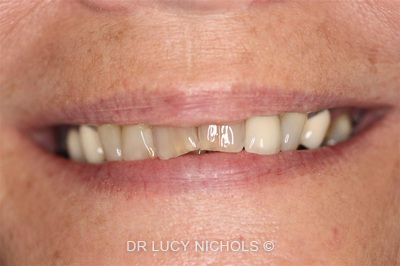
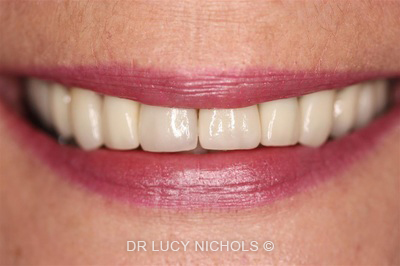
This lady had stained, dark front teeth with vertical cracks, old unsightly porcelain/metal crowns and bridges, and slightly crooked teeth. We first did some tooth whitening, then replaced the old crowns and bridges with modern highly aesthetic all ceramic restorations and placed some porcelain veneers on the other teeth. She was delighted with her new smile.
A dental veneer is a layer of tooth-coloured material which is attached to and covers the surface of a tooth. They are usually made of porcelain or composite resin. Composite resin veneers can be built up directly on to the tooth, while porcelain veneers are made in the laboratory and are later glued (bonded) on to the tooth.
To fit a veneer, the tooth will need a very small amount of enamel removed from its surface. This is usually completely pain free. A mould (impression) will be made of the tooth and the dentist will also record the colour that the new veneer will need to be in order to match the neighbouring teeth. This information will be sent to a dental laboratory who will make the veneer.
Until the veneer has been made the tooth may be more sensitive to hot and cold. A temporary veneer is not usually necessary.
At a later appointment the veneer will be bonded to the teeth.
There are no strong reasons against veneering a tooth. However, certain factors increase their risk of failure, such as grinding of teeth, excessively worn teeth, very large fillings, unfavourable bite (occlusion), vomiting associated with bulimia and chronic alcoholism and acid regurgitation as in hiatus hernia. They may also be unsuitable if the teeth are very discoloured.
Veneers are best avoided in situations where the basic rules of dental hygiene are not observed.
Compared with a crown (cap), less of the tooth needs to be drilled away. Veneers are relatively quick and simple, although they require as much planning and attention to detail as any other treatment.
Sometimes the edge can become discoloured with time. Veneers can occasionally become unstuck, and if they are stuck back on again the rebonding will not be as durable as the initial bond. It may also be difficult to match the shade of the veneer to the adjacent teeth if only one front tooth is being veneered.
During the first three days after fitting, while the glue is setting, it is advisable to keep to a soft diet and to avoid extremes of temperature. It is also wise to avoid alcohol and medicated mouthwashes during this initial stage.
Habit patterns such as nail biting or pencil chewing should be avoided, as well as biting into hard food, to prevent fracture of the veneer. Use of a soft mouthguard at night and when involved in any form of contact sport is recommended.
Routine oral hygiene procedures such as the use of a soft toothbrush and floss are a must. Electric toothbrushes may be used on veneers. If plaque removal from between the teeth is a problem, an interdental brush may be used. Use of a less abrasive toothpaste is recommended. The use of acidulated fluoride mouth rinses should be avoided as they might damage the surface finish of the veneers. Routine follow-up visits should be maintained with a dentist.
Although fractured veneers can be repaired, they are at best only a patchwork approach. Hence, the cosmetic outcome will be poor. If the fractured piece is preserved it could be stuck back or some composite resin material can be used to build up the defect. Although the best answer to the problem is to remake the veneer, the quality of the bond to the tooth achieved the second time around may not be as good as the first time.
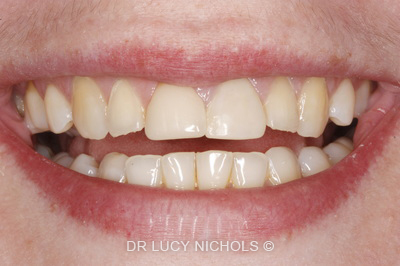
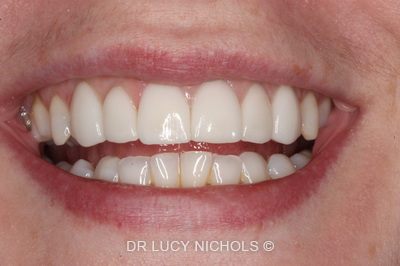
This lady had veneers on her front teeth that had fallen off before so she wanted them replaced with crowns. She also had a problem with acid wear caused to her teeth from drinking lots of fizzy drinks when she used to work behind a bar. Because a lot of enamel had already been lost from the acid arosion we were able to make 6 front crowns that fitted over the teeth with very little drilling. We also whitened her teeth too.
If you are self-conscious about the shade of your teeth or if you have staining on some of your teeth, professional teeth whitening treatment is a safe and recommended option for you to consider.
Home teeth whitening kits are also available to lighten the teeth more gradually. In this case, the trays with bleaching agent can be worn overnight. With all whitening treatment, individual results will vary and are dependant on your initial tooth colour and the nature of your tooth staining.

The Invisalign System is a virtually invisible treatment that uses an innovative approach to gently yet effectively straighten your teeth.
Through a series of custom-made removable aligners made with unique SmartForce technology, the Invisalign system gradually and predictably moves your teeth to your desired position.
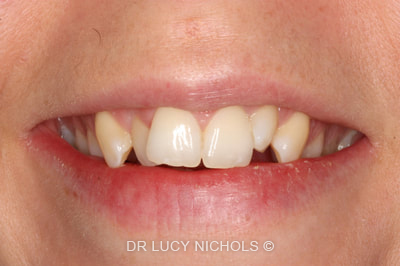
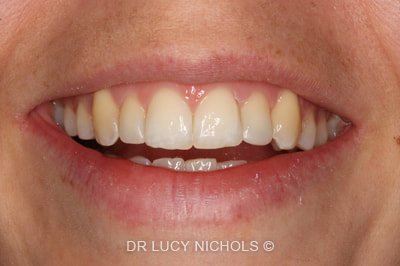
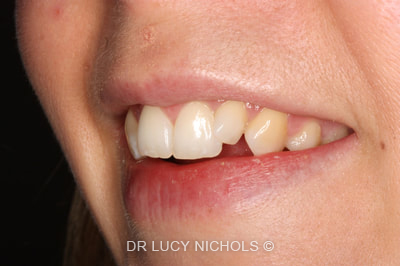
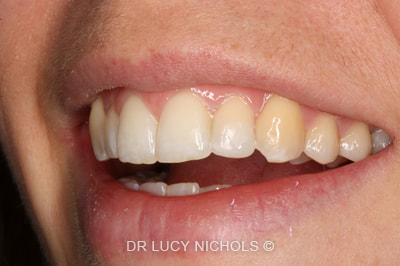
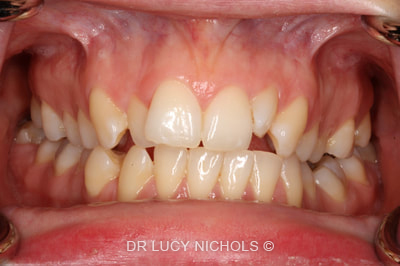
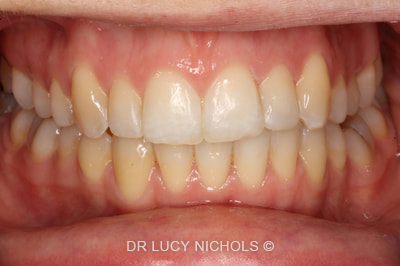
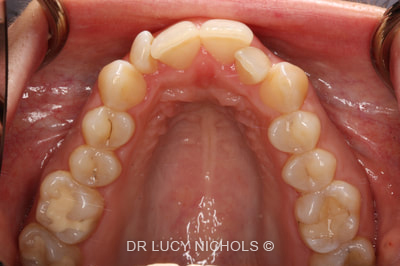
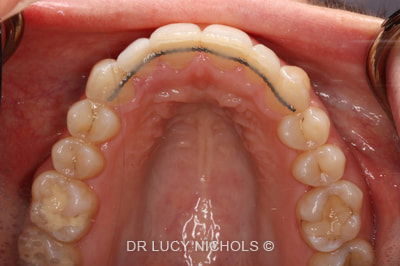
This lady decided to have Invisalign to straighten her teeth in time for her wedding.
Have you lost all or some of your natural teeth? Bridges, dentures and flexible dentures are not the only solution, thanks to advances in modern dentistry. Have you heard of dental implants? Implant dentistry offers a clinically proven and safe solution to getting a great smile back and being able to bite and chew with confidence.

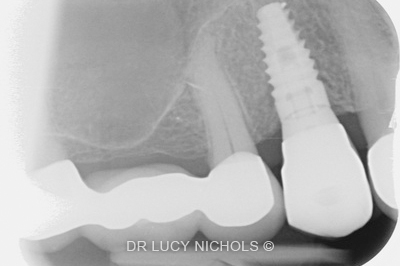
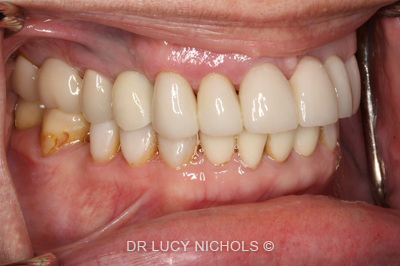
This lady needed to have an infected tooth removed. This was replaced with a Biohorizons dental implant. On the photo the implant if the fourth tooth from the front on the top right.